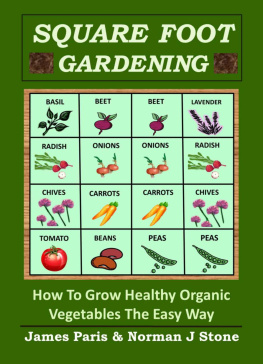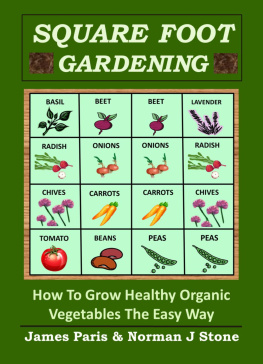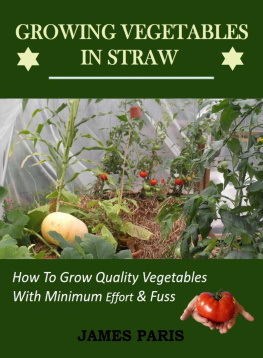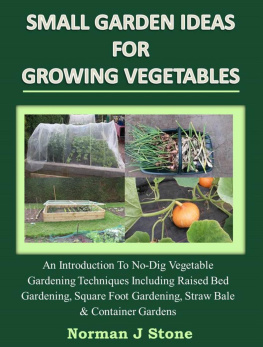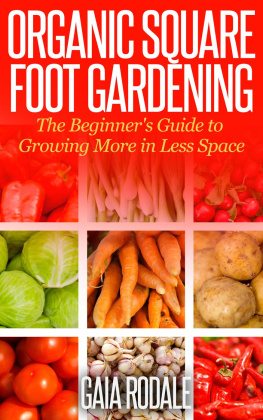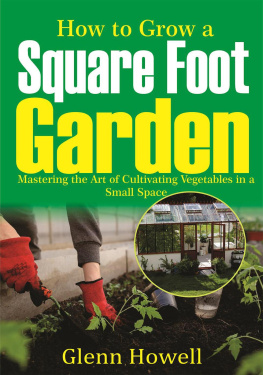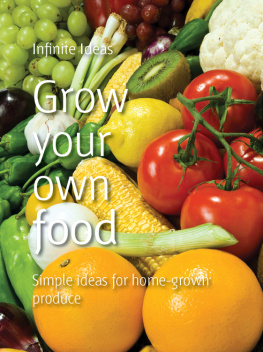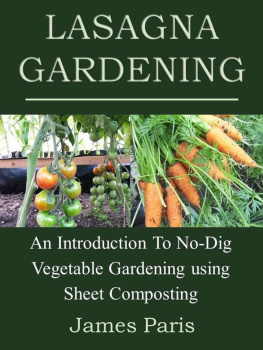Introduction:
What is it?
Easy Gardening?
Compared to the traditional way of growing vegetables in long rows straight into the soil, Square Foot and indeed Raised Bed Gardening, certainly involves a lot less effort in order to produce significantly larger harvest. The reasons for this are simple, as this list suggests.
- The growing medium in a SFG is much lighter and easier to manage no need for heavy digging equipment or back-breaking work to lift weeds.
- The small area involved allowing access from all sides, means that the plants are easy to maintain and keep in good health thereby producing the best crop possible.
- Combining Companion Planting methods means you have no need for chemical fertilizers or pest control methods.
- The compact nature of the SFG means that you have a larger harvest in a smaller area, for less effort.
Even though this method of gardening does not require any heavy digging or raking out of soil - d oes this mean that there is no effort involved at all, in order to grow fantastic healthy vegetables?
Ha ha you wish! Joking apart however the fact is that anything worthwhile doing requires effort of some kind it is a sort of universal law. Employing methods such as Square Foot Gardening though, ensures maximum returns on the minimal effort you have put into your gardening.
If you are truly looking for an effortless way to produce vegetables; I can tell you there is no such thing unless a trip down to the supermarket can be included; although even that takes effort, only of a different kind!
With all that said however, it is beyond doubt that employing the SFG method does produce the goods and there is something intensely satisfying in the whole process of growing your own vegetables, picking them from the plant, cooking them and presenting them at family mealtimes.
Apart from the fact that they are the healthiest vegetables you will ever consume, there is a great satisfaction in growing your own food that goes beyond mere effort and production; and indeed for many it has a definite spiritual benefit as George Bernard Shaw once quoted. .
The best place to seek God is in a garden. You can dig for him there.
Back to SFG ..
Square foot gardening is a concept or idea that was promoted back in the 1980s by Mel Bartholomew who coined the phrase Square Foot Gardening. Since then it has gone from strength to strength, as the desire to grow vegetables free from harmful pollutants, as well as the need to save money and the environment in the process; has gained in popularity.
It is now firmly planted in the gardeners consciousness as a way to maximise vegetable production whilst employing the minimum of spaces.
The name comes from the idea that a small frame measuring 4 foot by 4 foot, is sufficient to produce a good selection of vegetables over the growing season, that will equal the needs of a small family.
The box or frame is divided up into square foot sections as in the picture below. This equals a growing area of 16 square feet, sectioned into square foot spaces. This is an important aspect of the SFG as it is this intensive rotational method of planting that is the essence of the whole concept.
Properly planted and cared for, this small area of garden is able to produce an abundance of vegetables.

The actual construction materials of your SFG can vary widely as will be discussed later - but traditionally is a simple framework of timber about 4-6 inches high. The depth very much depends on the crops you wish to grow, as root vegetable crops like carrots or parsnips for instance need a suitable depth of compost in order to grow adequately.
Cabbage or lettuce, zucchini or cucumber however will thrive quite well in only a few inches of good compost as they are of course above-ground vegetables, and so do not require depth in order to grow adequately.
Each of the foot-square spaces is occupied by a variety of vegetables, with the larger plants like potatoes and tomato for instance occupying a square all to themselves; while beets can be grown 9 to a square and carrots can be grown 16 to each square as in the example chart below.
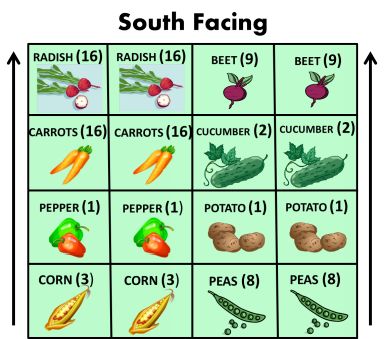
The diagram above is just an example of the way you may lay out a SFG, with the taller plants to the rear where they will not block the sunlight to the lower vegetables. The number alongside the individual plants, is the number of plants that you can grow in each individual square.
Types of plants and the numbers that can be grown in each square will be discussed in further chapters.
Why Square Foot Gardening?
Along with a growing awareness that the human race must start taking more responsibility for its environment, some people have also come to the realization that doing so actually means a win-win situation for us all in many different ways. Why is this? In a nutshell it is simply down to the fact that if we treat our environment with respect, then in turn we are rewarded with better health, both physical and mental, as well as better living conditions free of pollution where we can truly enjoy what nature has provided.
Gardening in small spaces using the Square Foot Gardening method first pioneered by Mel Bartholomew in the 1980s, is one way where individuals can start to take back control from the mega-stores with regard to food production. It enables us to grow fruit and vegetables without the need for chemical fertilizers and other pollutants that contaminate the supermarket shelves, and instead allows us to grow our produce and feed our families without at the same time damaging our surroundings, our health and our wealth!
Another big factor that promotes the Square Foot Gardening method, is simply down to the fact that it enables people with very limited space to grow their own fresh vegetables. Even individuals living in city apartments are now finding that the roof space can be ideal for SFG (along with the relevant permissions of course!), and whole communities have joined with their local authorities to release waste land for SFG projects.

